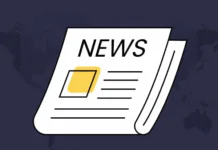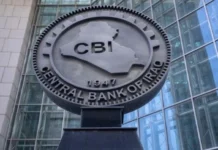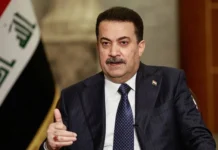Good Morning,
Treasury Secretary Bessent Urges Internal Review of Federal Reserve as Pressure Mounts on Chair Powell
U.S. Treasury Secretary Scott Bessent has called for a comprehensive internal review of the Federal Reserve, citing concerns over the central bank’s expanding operations and budget amid rising political pressure on Fed Chair Jerome Powell.
In a Bloomberg Television interview, Bessent highlighted the need to reassess the Fed’s institutional scope, warning that its growing mandate risks undermining the core function of monetary policy.
“I believe that it would do Chair Powell a favor, and he would be doing the institution a favor, if he did an internal review—separating monetary policy from everything else.”
Bessent echoed concerns previously raised by Larry Summers, noting that the Fed’s “mission creep” could compromise its independence. Since 2004, the central board’s budget has quadrupled, a shift Bessent says warrants internal scrutiny.
“It is a big, sprawling institution. Every institution needs to examine themselves.”
Political Pressure and Presidential Criticism
The comments come amid mounting pressure from President Donald Trump, who has publicly criticized Powell for refusing to cut interest rates. Trump has expressed a hope that Powell will voluntarily resign, though he stated he does not intend to fire him.
Adding fuel to the debate, renowned economist Mohamed El-Erian recently called for Powell to step down—a position that surprised Bessent but did not overshadow his own call for a review process.
“The Bank of England, after the 2022 rate shock, brought in outside experts to assess what went wrong. That’s the kind of model we could look at.”
Proposed Structure of Review
Bessent emphasized that Powell could oversee the review himself, potentially leading a committee or expert panel. He stressed that the internal review must be credible, warning that a superficial process might require an external examination.
“If the internal review didn’t look like it was serious, then maybe there could be an external review.”
Broader Implications
With financial policy at a crossroads, Bessent’s call reflects a broader debate over central bank transparency, mission clarity, and the Fed’s expanding influence in non-monetary realms. As political scrutiny intensifies and the 2024–2025 rate debate continues, the Fed’s internal structure is now under a national spotlight.
@ Newshounds News™
Source: DailyHodl
~~~~~~~~~
Trump’s Presidential Crypto Task Force Set to Deliver Landmark Report July 30
The Presidential Working Group on Digital Asset Markets, established under President Donald Trump’s first executive order, is preparing to release its highly anticipated 180-day crypto policy report on July 30—a milestone for the U.S. digital asset landscape.
Key Points to Expect:
• Comprehensive guidance on stablecoin regulation, token classification, and enforcement reform following passage of the GENIUS and CLARITY Acts
• Potential blueprint for building a federal Bitcoin reserve using seized digital assets, not taxpayer funds
• Clear stance against a retail CBDC, citing privacy and trust concerns
• Framework for international cooperation and tax policy updates
“America is now leading the way on digital asset policy,” said Bo Hines, Executive Director of the task force.
From Campaign to Policy
Just three days after inauguration, President Trump signed an executive order establishing the working group, fulfilling campaign promises to make the U.S. “the crypto capital of the world.” Led by AI and crypto czar David Sacks, the task force includes top officials from the Treasury, SEC, CFTC, DOJ, and other federal agencies.
The Bitcoin Reserve Question
One of the most talked-about aspects of the report is the potential recommendation to build a Bitcoin reserve using digital assets already seized by federal authorities.
“This isn’t about buying Bitcoin on the open market, but rather building a secure sovereign crypto reserve drawn from existing assets,” said Monica Jasuja, Chief Expansion and Innovation Officer at Emerging Payments Association Asia.
No Retail CBDC, Clearer Stablecoin Oversight
The group is expected to firmly reject the idea of a retail central bank digital currency (CBDC) due to privacy concerns. Instead, the U.S. will likely promote regulated USD-pegged stablecoins and outline new compliance standards for issuers.
A Step Toward Global Leadership
If the recommendations include a secure and strategic approach to holding crypto reserves, it may position the U.S. as a global leader in sovereign crypto infrastructure, analysts say.
“If done right, this report could deliver the kind of regulatory clarity that makes America the most attractive place for digital finance development,” said Jasuja.
The release of this report will follow a structured review timeline laid out by Trump’s executive order, requiring all agencies to submit input within 30, 60, and 180-day windows respectively.
@ Newshounds News™
Source: Decrypt
~~~~~~~~~
Tether Eyes Return to U.S. Market Amid Stablecoin Regulatory Shift
Tether, the issuer of the world’s most traded stablecoin USDT, is making significant moves toward reentering the United States as the regulatory landscape for digital assets evolves.
In a new interview with Bloomberg Television, CEO Paolo Ardoino confirmed that Tether is “well in progress” with establishing a domestic strategy focused on payments, interbank settlements, and trading.
“We are in the process of building our U.S. presence, but our focus will remain on emerging markets,” Ardoino said Wednesday.
A Controversial Past, But Global Dominance
Tether was previously banned from operating in New York and paid nearly $60 million in 2021 to settle with both the New York Attorney General and the CFTC over misleading claims related to its reserves.
Despite this, Tether remains dominant, with USDT representing 70% of the stablecoin market as of Q1 2025. The company reported $149.28 billion in total assets and $143.68 billion in liabilities, according to its May attestation signed by BDO Italia SpA.
Tether has not yet undergone a formal audit by a Big Four firm, although Ardoino stated that conversations with auditors are ongoing.
U.S. Strategy and Compliance Challenges
Although Ardoino said Tether does not plan to go public, he reaffirmed that the company is working toward compliance with U.S. regulations. Tether’s reserves are largely made up of compliant assets, but still include bitcoin and secured loans, which may not meet new U.S. regulatory standards.
In a May interview, Ardoino underscored the company’s broader mission:
“Our customer base is the 30 billion unbanked people who aren’t part of the traditional financial system.”
A New Dollar-Pegged Stablecoin Coming
Tether also plans to launch a new U.S. dollar-pegged stablecoin within a year, signaling an effort to align with the GENIUS Act and the new U.S. regulatory framework for stablecoins.
As the U.S. government shifts toward blockchain-based dollar issuance, Tether’s strategic return could reshape the stablecoin sector—especially if it can navigate compliance while maintaining its dominance in emerging economies.
@ Newshounds News™
Source: PYMNTS
~~~~~~~~~
Seeds of Wisdom Team RV Currency Facts Youtube and Rumble
Newshound’s News Telegram Room Link
Follow the Roadmap
Follow the Timeline
Seeds of Wisdom Team™ Website





